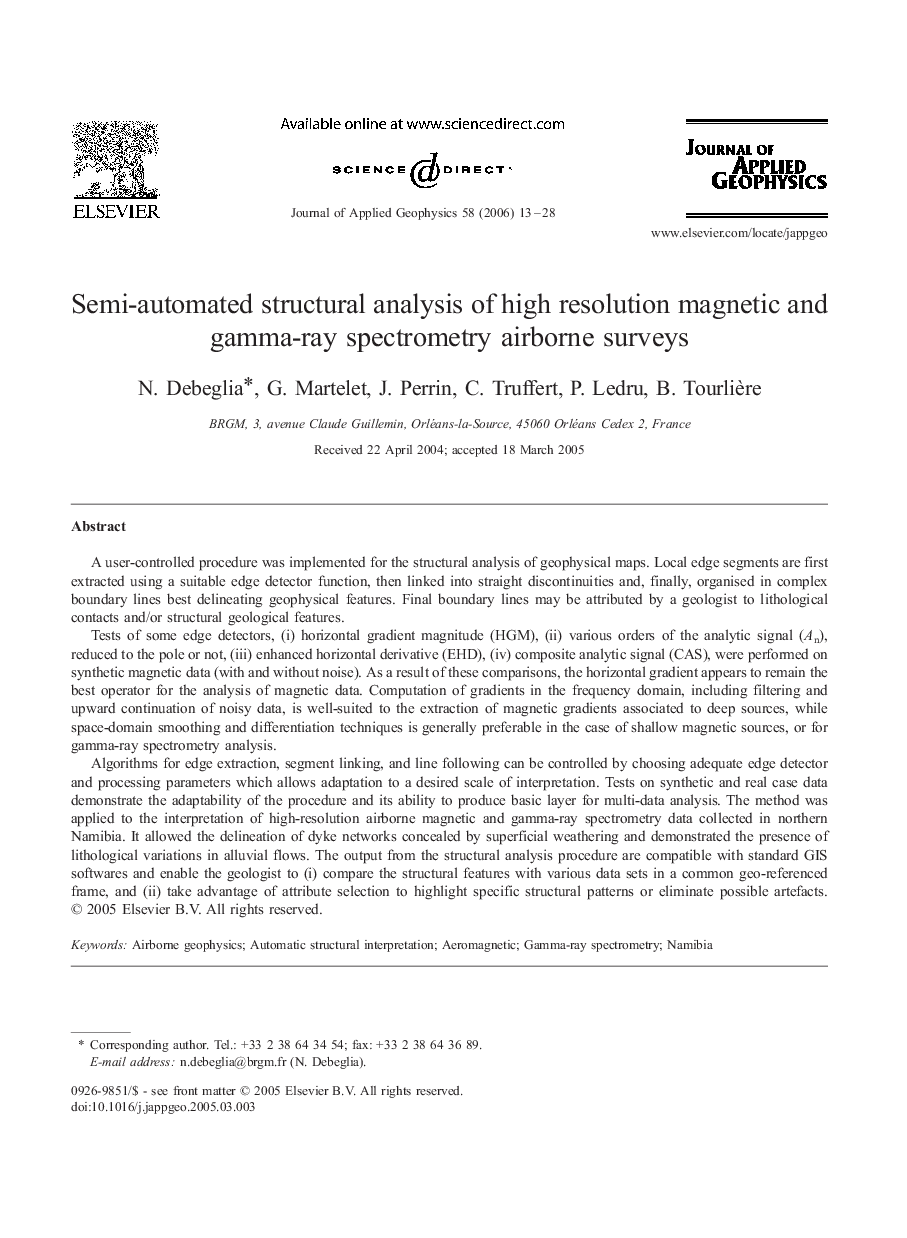| Article ID | Journal | Published Year | Pages | File Type |
|---|---|---|---|---|
| 9537564 | Journal of Applied Geophysics | 2005 | 16 Pages |
Abstract
Algorithms for edge extraction, segment linking, and line following can be controlled by choosing adequate edge detector and processing parameters which allows adaptation to a desired scale of interpretation. Tests on synthetic and real case data demonstrate the adaptability of the procedure and its ability to produce basic layer for multi-data analysis. The method was applied to the interpretation of high-resolution airborne magnetic and gamma-ray spectrometry data collected in northern Namibia. It allowed the delineation of dyke networks concealed by superficial weathering and demonstrated the presence of lithological variations in alluvial flows. The output from the structural analysis procedure are compatible with standard GIS softwares and enable the geologist to (i) compare the structural features with various data sets in a common geo-referenced frame, and (ii) take advantage of attribute selection to highlight specific structural patterns or eliminate possible artefacts.
Related Topics
Physical Sciences and Engineering
Earth and Planetary Sciences
Geophysics
Authors
N. Debeglia, G. Martelet, J. Perrin, C. Truffert, P. Ledru, B. Tourlière,
